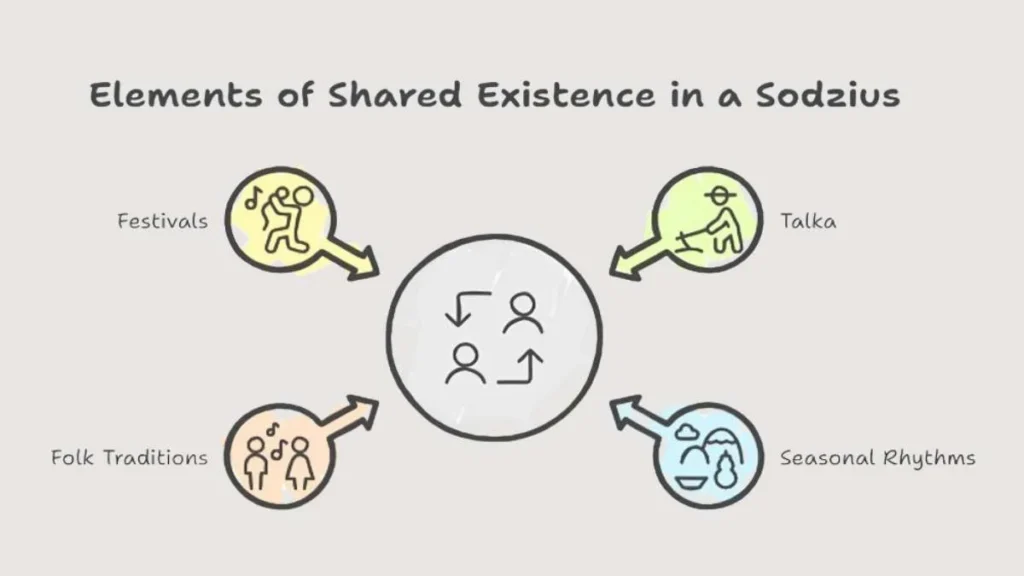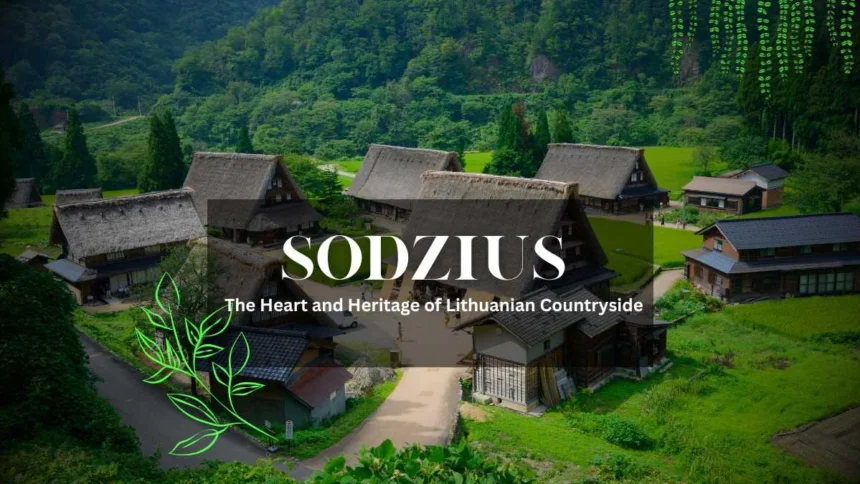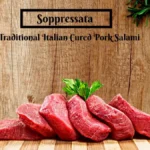Sodzius, a Lithuanian word that translates to village, farmstead, or rural homestead, carries a meaning far more profound than geography. In Lithuanian culture, Sodzius represents the essence of traditional countryside life: wooden cottages nestled among fields, neighbors working together, and customs passed down through generations.
It is both a physical place and a cultural heartbeat, where the rhythm of life follows the seasons and every act, from planting rye to celebrating midsummer, is tied to the land. It is a living symbol of heritage, unity, and resilience for Lithuanians.
The Origins of Sodzius
The word Sodzius has its roots in Lithuania’s agrarian past, where the land was both livelihood and legacy. Historically, a Sodzius was a cluster of farmsteads surrounded by fields, forests, and rivers.
In the 19th century, these communities were self-sufficient and closely knit, built on shared labor, mutual support, and strong family ties. It was a settlement and a repository of the Lithuanian language, folklore, and seasonal traditions, preserving them during political and cultural upheaval.
The Landscape of a Sodzius
Visiting a Sodzius is like stepping into a painting where every detail tells a story:
- Traditional wooden houses with shingled or thatched roofs.
- Barns and granaries store the fruits of hard labor.
- Kitchen gardens blooming with herbs, potatoes, and root vegetables.
- Central wells or village greens serve as gathering spots.
Nature wraps around the Sodzius like a protective cloak, meadows buzzing with bees, pine-scented forests, and rivers where children swim in summer.
Life in a Sodzius: A Shared Existence
Life in a Sodzius was defined by interdependence. Families worked their plots but came together for tasks too large for one household:
- Talka (Communal Work): Villagers united to harvest crops, build barns, or repair roofs, with food and song as reward.
- Seasonal Rhythms: Spring sowing, summer haymaking, autumn harvesting, and winter evenings by the stove, telling folk tales.
- Folk Traditions: Weddings, christenings, and harvest feasts blend pagan symbolism with Christian rituals.
- Festivals: Joninės (Midsummer), Kūčios (Christmas Eve), and Užgavėnės (pre-Lent carnival) are celebrated with music, dance, and food.
Every season brought its duties, challenges, and joys woven together into the fabric of its life.

Sodzius as a Cultural Identity
It has always been more than a settlement; it is a guardian of Lithuanian cultural identity. During centuries of foreign rule, rural communities kept the Lithuanian language alive, preserved folk songs (dainos), and maintained ancient customs.
Today, even Lithuanians who live in cities feel a strong pull toward their family’s it. For many, it’s where their roots run deepest, and where they return in summer to reconnect with their heritage.
Sodzius in the Modern World
While modernization has changed rural life, the spirit of it endures. Some villages have embraced eco-tourism, offering visitors a chance to stay in restored farmhouses, participate in seasonal work, and learn traditional crafts. Others remain untouched, maintaining the slow pace and traditions of past generations.
Three trends are helping to keep it culture alive:
- Heritage Tourism: Visitors come for folk festivals, craft workshops, and authentic farm experiences.
- Eco-Living: Families return to the countryside for sustainable farming and a simpler lifestyle.
- Diaspora Restoration: Lithuanians abroad buy back and restore ancestral homesteads.
Festivals That Keep Sodzius Alive
Festivals in it are immersive cultural experiences:
- Joninės (Rasos): Celebrating midsummer with bonfires, wreath-making, and midnight songs.
- Užgavėnės: Masked festivities and pancakes to say goodbye to winter.
- Kūčios: A symbolic 12-dish Christmas Eve supper eaten in candlelight.
These are not staged events but authentic traditions kept alive by community participation.
Why Sodzius Still Matters
It symbolizes:
- Belonging: Everyone is part of a living network of care and history.
- Continuity: Customs passed down through centuries.
- Resilience: Holding fast to values despite change.
In a fast-paced, digital world, it offers something rare: an authentic connection to land, people, and tradition.
Preserving Sodzius for the Future
To ensure its traditions survive, Lithuania is focusing on:
- Heritage Education: Teaching folk songs, crafts, and rural history in schools.
- Cultural Tourism: Promoting authentic, small-scale tourism in rural areas.
- Architectural Protection: Restoring traditional wooden buildings.
- Community Events: Supporting festivals, markets, and storytelling nights.
The goal is not to freeze it in time, but to let it evolve while honoring its roots.
FAQs
Q1: What is the deeper meaning of Sodzius?
A: Beyond its literal meaning of village or farmstead, Sodzius represents a lifestyle built on tradition, community, and harmony with nature.
Q2: Is Sodzius life still everyday today?
A: While fewer people live permanently in rural areas, many traditions, festivals, and communal values of life are still preserved.
Q3: Can visitors experience authentic Sodzius culture?
A: Yes, through heritage tourism, farm stays, and seasonal festivals, visitors can actively participate in Sodzius traditions.
Conclusion
Sodzius is not just a place, it is a way of life, a bridge between past and present. It embodies the values of cooperation, respect for nature, and cultural pride that define Lithuania’s rural soul.
Whether experienced in person or carried in memory, it remains an enduring symbol of heritage, a reminder that progress and tradition can walk hand in hand.
Check out more content on our blog!






